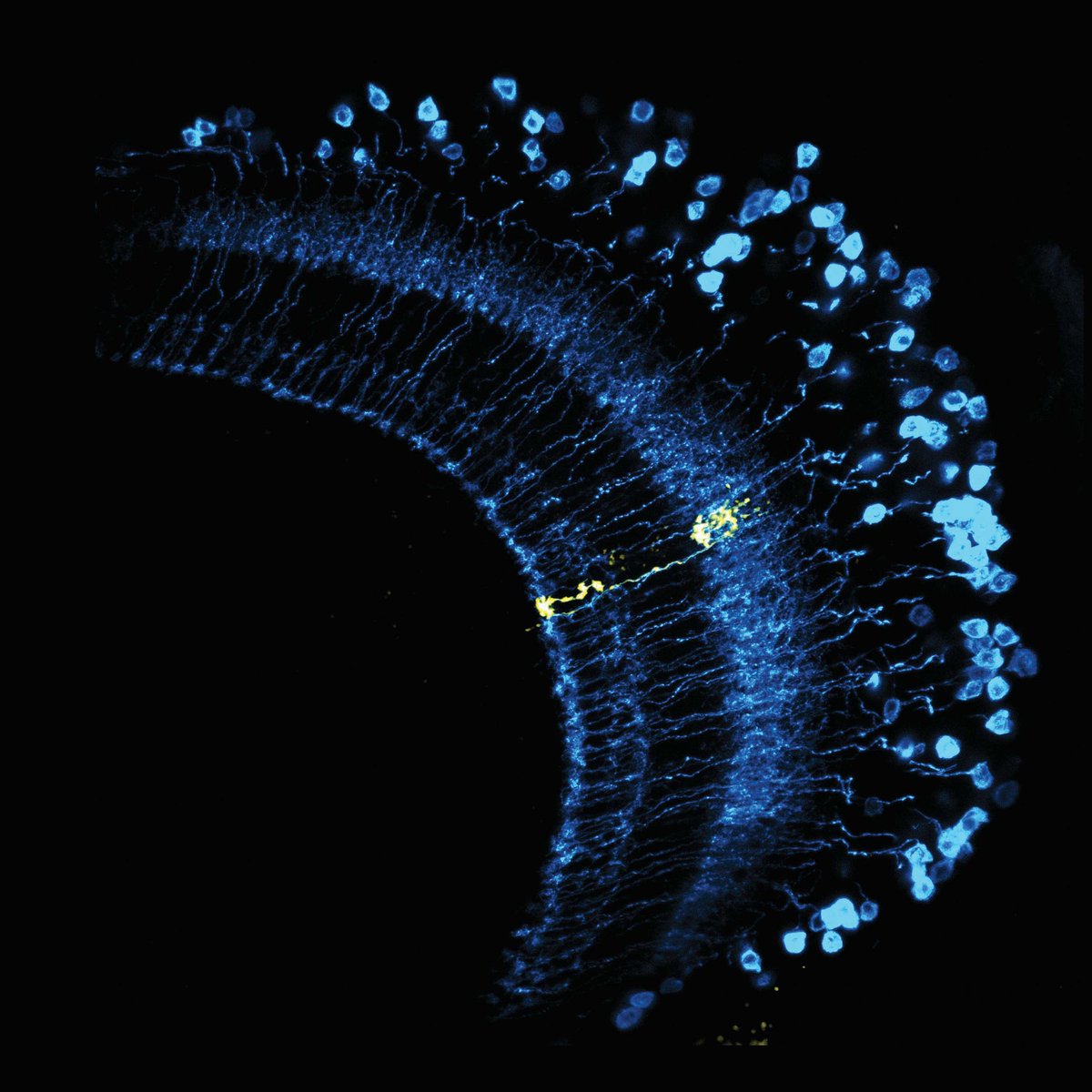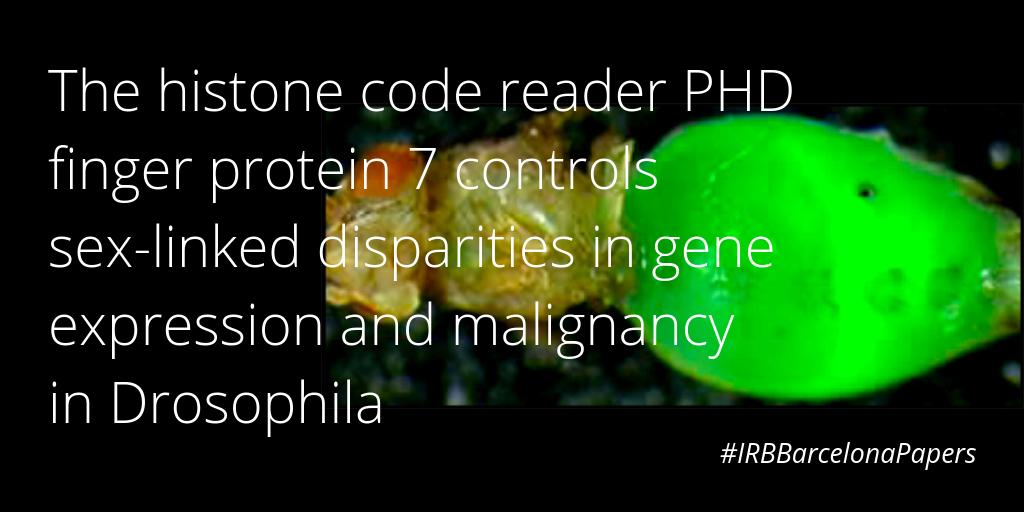Discover and read the best of Twitter Threads about #Drosophila
Most recents (18)
Excited to share our new manuscript on a novel #neuropeptide family that regulates #feeding across #evolution. Kudos to @Pat_TFrancisco for tackling this challenging project and coming up with the name @marmite . #homeostasis biorxiv.org/content/10.110… 1/22 



Also kudos to all our collaborators @TastekinIbrahim @EzraGili @fern1_ana @BartDeplancke @albinojorgemai @alisson_gontijo which allowed us to expand the scope of our study and contributed critical insights. It takes a village 2/22
I designed another #LEGO set inspired by the "model" organisms of biological research!
This time, it's the tiny but mighty fruit fly #Drosophila melanogaster, which researchers have used to study all manner of biological processes.
1/n
This time, it's the tiny but mighty fruit fly #Drosophila melanogaster, which researchers have used to study all manner of biological processes.
1/n

Multiplication in a single neuron. In a new @Nature article, @MalisJonatan, @BirteZuidinga, Axel Borst, and I describe the arithmetic of #Drosophila motion vision in biophysical terms. #Neuroscience @MPIforBI @MSCActions @EMBO (1/4) nature.com/articles/s4158… 

Using #PatchClamp #Ephys #InVivo, we recorded the membrane potentials of ON motion-sensing T4 neurons and their presynaptic partners. One type of input neuron (blue) provides continuous shunting inhibition. (2/4) 

Only during visual motion in a T4 neuron’s preferred direction, well-timed release from inhibition amplifies coincident excitation in a multiplication-like fashion. Such ‘multiplicative disinhibition’ can approximate a logic AND gate. (#FlyPushing by @BirteZuidinga; 3/4) 

#PlantScienceClassics #5: “Jumping Genes”. In 1950 Barbara McClintock published her landmark @PNASNews paper on the #Maize Dissociation (DS) & Activator (Ac) #TransposableElements, revolutionizing the field of #Genetics to hostile opposition from her peers.doi.org/10.1073/pnas.3… 

McClintock started her career & work on #Maize in the 1920s @Cornell, where she immediately made an impact by optimizing chromosome staining methods to characterize the chromosomes of triploid maize in 1929, & then describing the physical basis for chromosomal crossover in 1931. 

In 1941 she relocated to @CSHL, where she worked on chromosome breaks in maize. When characterizing a specific break on chromosome 9, she noticed that the break was always associated with a locus she named Dissociation (DS), which could change its position on the chromosome. 

#PlantScienceClassics #4: Arabidopsis thaliana suggested as model plant. In 1943 botanist Friedrich Laibach suggested A. thaliana as model organism for plant science. But the community was not ready yet - it took them another 40 years to see the light… doi.org/10.7287/peerj.… 

Laibach started work on A. thaliana in 1907, when, for his PhD-thesis, he determined the number of chromosomes in different plants he collected around his hometown Limburg, or @UniBonn, where he worked. A. thaliana only had 5 chromosomes, one of the fewest he found.
In his 1943 paper, Laibach points out the benefits of working with A. thaliana, such as easy to grow, small genome, short lifecycle, high seed yield, can be crossed & mutated…), pointing out how comparable it is to the ‘prime example’ of models: #Drosophila melanogaster.
#PlantScienceClassics #2: Radiation-induced mutagenesis. 100 years ago, in 1921, Emmy Stein developed radiation-induced #mutagenesis of #Antirrhinum majus plants. But today it seems that her invaluable contribution is being ignored… Read on doi.org/10.1007/BF0195… 

Mutagenesis is now an invaluable tool to understand a gene’s function. In the early 1900s, when the hereditary substance was not even identified yet, it was an even more important tool, which Emmy Stein added to the small toolbox available to biologists at the time.
Excited to share our latest work - we use pan-neuronal 2 photon imaging to dissect how the #brain integrates multiple internal states to guide #food #choice! Fantastic work by @Dahaniel who took on this challenging project almost solo! #drosophila biorxiv.org/content/10.110… 1/21
We wanted to know what changes in the brain when animals #crave #foods. How do different internal states interact to change neuronal processing of #food #taste to alter feeding decisions? And can we use neurogenetics to identify causal brain regions driving food choice? 2/21
We had shown that when flies are protein deprived they increase their preference for protein-rich food like yeast. Food taste is key when deciding what to eat. But does the metabolic state alter taste processing and how do internal states change decisions? 3/21
I donated my PhD present to @FlyBaseDotOrg flybase.org, which had a major funding cut. THE genes & genomes & stocks database for #Drosophila research! Scientists, could you do your work without databases of this kind? Here's how I needed them 🧵
(1) The power of #Drosophila comes with the community stock centres. @FlyBaseDotOrg is the prime spot to look up stocks for your gene of interest. Our mitochondrial SAM paper in @ScienceAdvances started here.
(2) We @WredenbergLab donated our SAMC fly lines to the community and I was absolutely amazed by the help we got during the process from @flystocks and @FlyBaseDotOrg, who made sure the stock nomenclature was correct, boosting #ReproducibleResearch.
We just updated our preprint, reporting a novel single-objective #lightsheet design that is capable of imaging large samples, with a large imaging volume, uncompromized image resolution and speed, and multi-view imaging. (1/9)
doi.org/10.1101/2020.0…
doi.org/10.1101/2020.0…
Thanks to @DrLachie, now we have a visual abstract which explains how the microscope works. First half of the movie below. (2/9)
Second half of the visual abstract by @DrLachie (3/9)
A new job, a #pig, a pregnancy, a move, a pandemic, 5(6) rev and many #pampers later, I’m delighted to share my co-first authorship with @KellerValsecchi in the @AsifaAkhtar1 lab today in @nature. Thread below for summary nature.com/articles/s4158…
In this crazy journey we reconstituted the minimal #Drosophila requirements to achieve #Xchromosome targeting
We systematically asked the hierarchical interdependencies of the known MSL complex members to understand the contribution of #DNAmotif, #interaction_partners and #evolutionary determinants in the process of targeting the single male #Xchromosome for transcriptional upregulation
Very excited to share our (@Landgraf10006, @cwbeetle, @CamZoology) @biorxivpreprint investigating reactive oxygen species as novel signals for activity-dependent structural #plasticity in the #Drosophila brain! It’s my first lead-author work! biorxiv.org/content/10.110… 

1/12 Check our latest work led by our Postdoc @fbonnay_vienna where we describe a fundamental role of mitochondrial fusion and oxidative metabolism for tumor cell immortalization, in the larval brain of #Drosophila melanogaster. sciencedirect.com/science/articl… 

2/12 Our tumor model of choice is derived from asymmetrically dividing neural stem cells (NSCs) called type II Neuroblasts, deficient for the tumor suppressor gene brain tumor or brat. brat-deficient type II Neuroblasts give rise to big and lethal brain tumors. 

3/12 We first observed that brat tumors have increased oxidative metabolism compared to normal brains, with increased oxygen consumption and TriCarboxylic Acid (TCA) cycle metabolites.
#Zebrafish folks and beyond, join us - free from your living room, home office, bed, etc.!
Wed April 22 at 1:30pm-3:30pm (EDT), @snillum1 & I are looking forward to chair "Genetic Control of Development and Regeneration" (#Zebrafish):
app.genetics-gsa.org/tagc/abstracts…
app.genetics-gsa.org/tagc/abstracts…
Thu April 24 at 3:45 pm-5:45 pm, I'm honored to present our latest #zebrafish work on cell fates of the lateral plate mesoderm and mesothelial origins using scRNA-seq, SPIM, et al, led by @karin_prummel w/ @markrobinsonca @CrowellHL @CSoneson and more!
app.genetics-gsa.org/tagc/abstracts…
app.genetics-gsa.org/tagc/abstracts…
Happy to share our latest work on In Vivo Systematic Mutagenesis of a Human Enhancer @AxelVisel @diane_dickel @LenPennacchio @LBNLBioSci @BerkeleyLab
cell.com/cell/fulltext/…
Thread👇 (1/12)
cell.com/cell/fulltext/…
Thread👇 (1/12)
📺El programa @CincDies de @rtve2 mostra com és el dia a dia d'investigadors, personal d'administració i altres serveis del @PCB_UB. Descobreix la feina de les investigadores de l'@IRBBarcelona Lara Barrio, @elenasanchosuil i Carme Cortina.
rtve.es/v/5435417/ via @rtve
rtve.es/v/5435417/ via @rtve
📺La Lara Barrio, del Laboratori de Desenvolupament i Control del Creixement del @MarcoMilanIRB, ens explica com l'estudi de la mosca del vinagre #Drosophila ens ajuda a entendre malalties humanes.
➡️rtve.es/v/5435417/?t=0… via @rtve @CincDies

➡️rtve.es/v/5435417/?t=0… via @rtve @CincDies


📺Les investigadores de l'@IRBBarcelona @elenasanchosuil i Carme Cortina, del @BatlleLab, ens expliquen la seva investigació en #càncer de còlon i #metàstasi, que actualment és la principal causa de mort dels pacients de càncer.
rtve.es/v/5435417/?t=2… via @rtve @CincDie

rtve.es/v/5435417/?t=2… via @rtve @CincDie


Happy to be back in Sweden for my 2nd #BiologyofSperm meeting & hearing fascinating stories on evolution of sperm, gamete interactions, reproductive organs and strategies by fellow #spermnerds
#BoS2019 #BoS15
#BoS2019 #BoS15

Started strong yesterday with Sabine Koelle showing us the very first live imaging movies of sperm behavior in human reproductive tracts, all the way to the fertilization site, and even sperm filmed live swimming inside the testes! What a cool talk!
Next @lross_evoento told us about (incomplete) paternal genome silencing in fascinating mealybugs. @emwhitti brought us to the amazing world of Post-Ejaculatory Modifications w/ impressive proteomics data from 1000s of #drosophila reproductive tract dissections. #BoS2019 #BoS15
Existen diferencias en el grado de incidencia y supervivencia al cáncer entre hombres y mujeres. Sin embargo, sabemos poco sobre las causas moleculares de este hecho. Científicos👨🔬👩🔬del @IRBBarcelona han identificado en moscas posibles reguladores de este fenómeno
Sigue leyendo👇
Sigue leyendo👇

El laboratorio de División Celular, liderado por el investigador @icreacommunity Cayetano Gonzalez, comparó tumores cerebrales en moscas del vinagre, #Drosophila melanogaster, macho y hembra y observó que los tumores eran mas agresivos en los machos. 

Scientists 👨🔬👩🔬 at @IRBBarcelona have selectively eliminated cells in which RAS, an oncogene present in 30% of human cancers, was activated.
Find out more at this thread 👇
Find out more at this thread 👇

The rapid duplication of DNA 🧬 by RAS-expressing cells can lead to errors. Normally, the tumour suppressor protein p53 removes damaged cells, but RAS blocks this capacity. This is precisely the aspect that @MarcoMilanIRB and his team have exploited.
Using the fruit fly #Drosophila melanogaster as a model and TRAMETINIB, a drug prescribed for human melanoma, the researchers inhibited the capacity of RAS to block p53. This approach allowed them to selectively eliminate malignant tumours without affecting fly development. 











